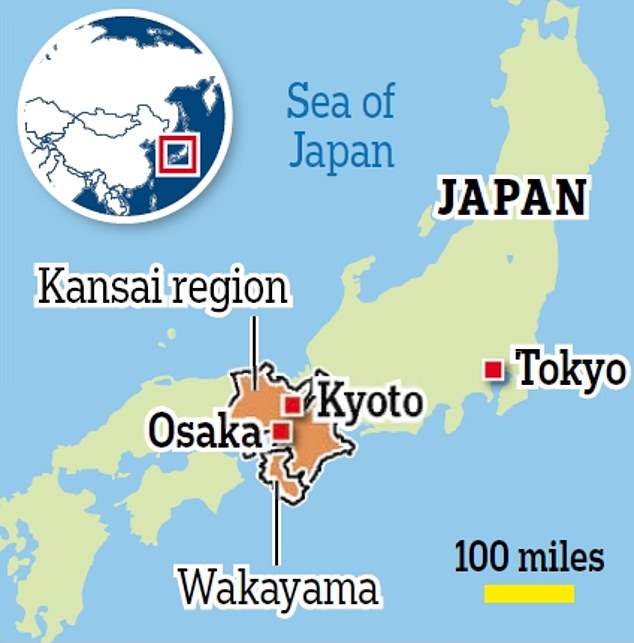
The city of Osaka, Japan is situated on Osaka Bay, which is on the eastern end of the Inland Sea and south-southwest of Kyoto. The area has been continuously inhabited since ca. 7,000 BCE and has a number of important historical and cultural sites. Modern Osaka is laid out on a grid pattern, demonstrating how intentional civic development dating back at least 500 years. Osaka is the third-largest city in Japan by population.
An important economic and cultural center, Osaka was a major target of Allied air raids during World War II.
To understand the significance of Osaka as a military target during WWII you must get a clear picture of what the location offered. The city of Osaka held within it a Naval and Army academy and weapons factory. The port made transportation of goods and personnel to and from the city an ideal location. Both machines and skilled laborers came from Nagasaki Iron Works as well as others directly from Tokyo to start the weapons production in 1870 at the Osaka Army Arsenal. This was built at the Osaka Castle and was government run. The Meiji government felt that it would be important. It was rather surprising this location was chosen instead of Tokyo which was the capital. This was planned and executed by Masujiro Omura. Even after he was killed by an assassin the plan continued and the arsenal was completed.

The arsenal carried a few name changes starting with Osaka Zoheishi in 1972, then Taiho Seizosho in 1872, and finally Osaka Army Arsenal in 1879. The factory manufactured mostly cannons and bombshells. Different conflicts influenced the growth of the arsenal factory. These included the Satsuma Rebellion, the Sino-Japanese War, and the Russo-Japanese War.
During WWII they employed as many as 60,000 workers and sometimes forced recruited students. Osaka was bombed and the site was only damaged a bit. The majority of the damage was felt in the city of Osaka itself. The day before the end of the war a B29 bomber finally hit the factory destroying up to 90% however due to air-raid sirens most workers had evacuated so casualties were only 382 people.

Still, damage to the city and the castle was extensive. A film by Brigadier John O’Brien, the leader of the Australian Scientific Mission to Japan (1945-46) shows the destroyed weapons factory. It also shows a six-barrel mobile rocket launcher, a twenty-barrel rocket launcher, heavy artillery pieces, and vehicles amongst the wreckage.
Today, the former arsenal is a business park and historical site called the Osaka Castle Park.
References
- Australian War Memorial. 2020. Retrieved May 11, 2020 from https://www.awm.gov.au/.
- “Bomb damage in Osaka, Japan”. 1945. Retrieved from https://www.loc.gov/item/93510727/.
- Boulos, N. 2019, May 4. “Rise and Shrine! Direct flights to Japan’s Osaka will put this heavenly region on the map.” Daily Mail (UK). Retrieved from https://www.dailymail.co.uk/travel/article-6990239/Rise-shrine-Direct-flights-Japans-Osaka-heavenly-region-map.html.
- Encyclopedia Britannica. 2012, May 30. “Takashimaya Co., Ltd.” Retrieved May 11, 2020, from https://www.britannica.com/topic/Takashimaya-Co-Ltd.
- National Diet Library. n.d. “Osaka Army Arsenal (Osaka Hohei Kosho).” Retrieved April 14, 2020 from https://www.ndl.go.jp/scenery/e/column/kansai/osaka_army_arsenal.html.
- O’Brien, John William Alexander. 1945. “Osaka Arsenal after the B29s.” Australian War Memorial. Retrieved May 11, 2020, from https://www.awm.gov.au/collection/F04956.
- “Osaka woman laments one-day delay in ending WWII. 2015, September 25. The Philippines New Agency (PNA). Retrieved from http://ezproxy.guilford.edu/login?url=https://www.proquest.com/wire-feeds/feature-osaka-woman-laments-one-day-delay-ending/docview/1716689140/se-2.
- “70 years after WWII: Disasters top events that remain fresh in the mind”. 2015, February 25. The Japan News. Retrieved from https://login.proxy078.nclive.org/login?url=https://search.proquest.com/docview/1657633281?accountid=11099